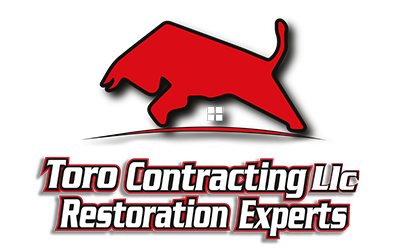Imagine standing outside your home on a rainy day, listening to the steady rhythm of raindrops hitting your roof. You feel a sense of security knowing that your roof is strong, durable, and perfectly suited to withstand the elements. But what if that roof was made from subpar materials? The peace of mind you crave might quickly turn into worry and costly repairs. This scenario underscores the importance of roofing essentials and how choosing the best materials for your home can make all the difference.
In this article, we’ll dive deep into roofing essentials by exploring the most reliable, efficient, and aesthetically pleasing materials available on the market today. From traditional options like asphalt shingles to modern alternatives such as metal and eco-friendly roofing solutions, understanding your choices is crucial to making an informed decision. Whether you are building a new house or replacing an old roof, the decision you make now will affect your home’s safety, energy efficiency, and curb appeal for years to come.
By the end of this read, you’ll know exactly which roofing essentials to consider, what factors influence your choice, and how to weigh costs against long-term benefits. We’ll also share expert tips on maintenance and durability that will keep your roof performing at its best.
If you’ve ever felt overwhelmed by the countless roofing options or uncertain about which material suits your home’s style and climate, this article is tailored just for you. Let’s embark on this journey together to ensure your roof is not just a shelter, but a steadfast guardian for your home.
Key Takeaways
Material Matters: Choose roofing materials (asphalt, metal, tile, slate, wood) based on durability, weight, and local climate resilience.
Durability vs. Cost: Heavier, longer-lasting options (slate, metal) cost more upfront but often save money over time; asphalt shingles are budget-friendly with moderate lifespan.
Climate Compatibility: Match materials to your weather—metal and tile deflect heat in sunny regions, asphalt and slate shed rain and snow effectively.
Energy Efficiency: Reflective or light-colored roofs can reduce cooling costs; insulated underlayments further improve thermal performance.
Aesthetic Alignment: Roofing style and color should complement your home’s architecture for maximum curb appeal.
Maintenance Needs: Metal and slate require minimal upkeep; wood shakes and asphalt shingles need routine inspection and treatment.
Professional Installation: Hire experienced roofers to ensure proper underlayment, flashing, and ventilation—critical for longevity and warranty compliance.
Why Roofing Essentials Matter: Choosing the Best Materials for Your Home
When it comes to maintaining the safety, comfort, and value of your home, understanding roofing essentials is absolutely crucial. Roofing is not just about protecting your house from rain, snow, or scorching sun, it’s a fundamental investment that affects your home’s structural integrity, energy efficiency, and even curb appeal. Choosing the best materials for your home’s roof can be the difference between a durable, long-lasting shelter and a problematic, costly repair project.
What Are Roofing Essentials?
Roofing essentials refer to the fundamental components and materials necessary for constructing or repairing a roof. This includes everything from the shingles or tiles, underlayment, flashing, and ventilation to the insulation and waterproofing systems. Each of these elements plays a vital role in ensuring the roof can withstand various weather conditions, mitigate heat transfer, and avoid leaks or damages.
Why Choosing the Right Roofing Materials Is Crucial
Statistics reveal compelling reasons why homeowners should invest time in selecting the right roofing materials. According to the National Roofing Contractors Association, a properly installed roof made from quality materials can last 25 to 50 years, directly influencing home resale value and reducing long-term maintenance costs. Conversely, poor material choices lead to frequent leaks, mold growth, and structural deterioration, which can incur thousands of dollars in repairs.
Energy efficiency is another critical factor. The U.S. Department of Energy reports that a well-chosen roofing system can reduce heating and cooling costs by up to 20%, especially when reflective or insulated materials are used. This becomes particularly important in regions experiencing extreme temperatures or variable climate conditions.
A Real-Life Success Story: The Johnson Family’s Roofing Transformation
Take the Johnson family from Oregon as a real-world example. When they decided to replace their aging roof, they initially considered the cheapest options available. After consulting with a roofing specialist, they learned about modern metal roofing materials known for durability, weather resistance, and energy efficiency. Choosing this premium roofing essential not only improved the appearance of their home but also decreased their energy bills significantly. Five years after installation, the Johnsons have experienced zero leaks despite some of the harshest storms in the region, validating their investment.
Conclusion
Understanding roofing essentials isn’t just about picking a pretty style or matching neighborhood trends. It’s about making informed decisions that protect your home, save money, and increase its lifespan. Choosing the best materials for your home’s roof is a foundational step toward long-term peace of mind and comfort, making it one of the smartest investments any homeowner can make.
How to Choose Roofing Materials Step by Step: A Practical Guide
Selecting the right roofing materials is a crucial decision that affects your home’s appearance, durability, and overall value. In this guide, we’ll walk you through the essential steps to choose roofing materials that perfectly fit your needs. Whether you’re building a new home or replacing an old roof, following this process will help you make an informed choice.
- Assess Your Climate and Weather Conditions
Your roofing material must withstand the local climate. For example:
– Hot and Sunny Climates: Materials like metal roofs and clay tiles resist heat and reflect sunlight, keeping your home cooler.
– Rainy or Snowy Climates: Asphalt shingles and slate tiles are excellent at shedding water and handling heavy snow loads.
– Windy Areas: Impact-resistant materials, including metal and certain types of shingles, are ideal for resisting strong winds.
Understanding how roofing materials perform under local weather conditions is the first key step.
- Consider the Architectural Style of Your Home
The roofing material should complement your home’s design:
– Traditional Homes: Asphalt shingles or wood shakes blend well with classic designs.
– Modern Homes: Metal roofing or green roofs add a contemporary edge.
– Historic Properties: Slate or clay tiles preserve authenticity and charm.
Selecting materials that enhance your home’s character not only improves curb appeal but also respects its architectural integrity.
- Evaluate Durability and Lifespan
Different roofing materials promise varying lifespans:
Choosing a material with a longer lifespan can save money over time, despite possibly higher upfront costs.
- Understand Maintenance Requirements
Every roofing material requires maintenance, but the effort varies:
– Low Maintenance: Metal roofing and slate require minimal upkeep.
– Moderate Maintenance: Asphalt shingles need occasional inspections and possible repairs.
– High Maintenance: Wood shakes require more frequent treatments to prevent rot and insect damage.
Consider the time and costs you’re willing to invest in maintenance when choosing materials.
- Analyze Cost and Budget
Determine your budget early and compare costs including installation, materials, and long-term upkeep. For instance:
– Budget-Friendly: Asphalt shingles are cost-effective and widely used.
– Mid-Range: Metal roofing balances durability with moderate costs.
– Premium: Slate and clay tiles come with a high price tag but offer exceptional longevity.
A detailed cost analysis helps ensure your roofing choice aligns with your financial plans.
- Check Local Building Codes and HOA Rules
Before finalizing your choice, verify:
– Building Codes: Requirements for fire resistance, wind uplift ratings, and energy efficiency can dictate acceptable materials.
– Homeowners Associations (HOA): HOAs may have restrictions on roofing materials and colors to maintain neighborhood aesthetics.
Ensuring compliance avoids future complications and fines.
- Consult with Roofing Professionals
Expert advice can be invaluable. Roofing contractors can:
– Assess your home’s structure.
– Recommend materials based on your specific needs.
– Provide quotes and timelines.
Scheduling consultations with at least three professionals ensures competitive pricing and informed choices.
- Review Warranties and Manufacturer Guarantees
Warranties protect against defects and premature wear. When comparing materials, pay attention to:
– Length and coverage of warranties.
– Installation clauses.
– Transferability if you sell your home.
A robust warranty adds peace of mind and long-term security.
- Make Your Final Selection and Plan Installation
After thorough research and consultations:
– Choose your roofing material based on all factors: climate, style, durability, maintenance, cost, codes, and expert advice.
– Schedule your installation during optimal weather conditions to avoid delays.
– Prepare your home and communicate with contractors for a smooth process.
To sum up, understanding how to choose roofing materials involves a comprehensive look at factors ranging from climate compatibility to cost and aesthetics. By following these steps, you can select the best roofing materials tailored specifically for your home, ensuring it remains safe, beautiful, and efficient for years to come.
Remember, choosing the right roofing materials is not just a purchase, it’s an investment in your home’s future. Take the time to evaluate your options carefully, and your roof will reward you with protection and beauty for decades.
Tips for Choosing the Best Roofing Materials for Your Home 🏠✨
✅ Research Material Types: Explore options like asphalt shingles, metal roofing, clay tiles, and wood shakes to find what suits your climate and style best.
✅ Consider Durability: Opt for materials that withstand local weather conditions, such as metal for heavy snow or clay tiles for hot, dry climates.
✅ Evaluate Energy Efficiency: Choose roofing that reflects heat and improves insulation to save on energy bills, like cool roofing or reflective shingles.
✅ Check Warranty and Lifespan: Select materials that offer strong warranties and long lifespans to ensure value and peace of mind.
✅ Factor in Maintenance Needs: Some materials require less upkeep, such as metal or slate, while others like wood might need regular treatment.
✅ Match Your Home’s Aesthetic: Pick a roofing style and color that complements your home’s architecture and personal taste.
✅ Set a Realistic Budget: Balance upfront costs with long-term benefits; investing more initially can save money on repairs and energy later.
✅ Hire Experienced Professionals: Work with skilled roofers who can advise on material choices and ensure proper installation.
💡 Extra tip: Always order a little more material than needed to cover mistakes or future repairs, preventing color mismatches and delays.
Key Concepts
When embarking on the journey of roofing, especially under the banner of Roofing Essentials: Choosing the Best Materials for Your Home, it’s paramount to unravel the core concepts that form the foundation of making informed decisions. Roofing isn’t just about laying shingles on a surface; it’s about weaving a protective cloak that guards your home against nature’s many whims. Let’s explore the crucial elements that define roofing materials and their significance.
The Anatomy of Roofing Materials
Imagine your roof as a multilayered fortress. Every material used is a brick, a shield, or a thread in this fortress, each with a unique role:
– Durability: At the heart of roofing essentials is the notion of durability. This concept refers to a material’s ability to endure the relentless assault of sun, rain, wind, and sometimes hail. A durable roofing material acts like the armor of a knight, resisting wear and tear to protect what lies beneath.
– Weight: Roofing materials carry varying weights, impacting the structure beneath. Picture a feather and a rock, both cover ground, but one demands stronger support. Heavy materials like slate or tile, for example, necessitate a sturdy framework, much like how a heavy backpack requires a strong back to carry it.
– Aesthetic Appeal: Beyond function lies form. The material chosen contributes significantly to the home’s visual identity. Whether it’s the rustic charm of wood shakes or the sleek modernity of metal roofing, materials speak a silent language of style and personality.
– Thermal Performance: Think of your roof as the gatekeeper of temperature inside your home. Certain materials have insulating properties that affect your energy bills and comfort by reflecting or absorbing heat. This concept intersects with energy efficiency, a cornerstone in modern roofing essentials.

Material Varieties: A Spectrum of Choices
Roofing materials are not created equal, and understanding their intrinsic characteristics enhances the wisdom behind selecting the best option:
– Asphalt Shingles: The everyman of roofing materials, asphalt shingles combine affordability and versatility. They’re akin to the dependable workhorse, widely available and effective, yet not extraordinary in longevity.
– Metal Roofing: This material shines with longevity and resilience. Imagine a metallic shield forged to repel the elements with ease. Its ability to reflect heat and resist fire makes it increasingly popular, especially in regions with harsh climates.
– Clay and Concrete Tiles: These materials exude timeless elegance and robust durability but come with heft. The analogy here is a grand old cathedral roof, majestic and enduring, but requiring solid foundations to support their weight.
– Wood Shakes and Shingles: Offering natural beauty and insulation, wood roofing evokes images of cozy cabins in the forest. However, the susceptibility to moisture and fire demands consideration, a balance between charm and caution.
– Slate: The epitome of sophistication and durability, slate feels like the diamond in the roofing world. Its luxurious texture and lifetime longevity justify its premium status, though installation complexity and cost can be barriers.
Weather Resistance: The Unseen Battle
Roofs wage a constant war against weather, and material choice is the battleground strategy. Each roofing material interacts differently with environmental elements:
– Water and Moisture: Some materials repel or absorb water differently. Like a raincoat with waterproof fabric versus cotton that soaks through, this trait defines how a roof handles rain and snow.
– Wind Resistance: A roof’s ability to withstand fierce winds can determine whether a home stays intact during storms. Certain materials interlock or adhere more firmly, much like puzzle pieces that resist being pried apart.
– UV Radiation: Continuous sun exposure can degrade materials over time. Some materials incorporate UV-resistant coatings, akin to sunscreen for your roof, prolonging their vibrant look and structural integrity.
Sustainability and Environmental Impact
In the narrative arc of roofing, the growing theme of sustainability cannot be overlooked. Roofing materials vary in their environmental footprint, some are harvested or manufactured in ways that strain natural resources, while others embrace recycling and eco-friendly production. Considering this, roofing materials can be viewed as characters in an environmental story, heroes or villains depending on their life cycle and recyclability.
Cost Versus Longevity: The Roofing Equation
A crucial underlying concept in roofing essentials is the dynamic interplay between upfront cost and long-term value. This is not merely an accounting equation but a story of investment and payoff over time. A cheaper roof might seem enticing but could require more frequent repairs or premature replacement. Meanwhile, premium materials are akin to planting an old-growth tree, initial patience and expense yield enduring shelter.
In essence, roofing materials are the protagonists in an epic narrative of protection, aesthetics, and sustainability. Understanding these key concepts allows homeowners to look beyond the surface, the visible shingles, and appreciate the profound role roofs play in the comfort and security of a home. The journey of choosing the best roofing materials is not simply a transaction; it’s a thoughtful selection deeply rooted in the interplay of nature, design, and durability.
Frequently Asked Questions about Roofing Essentials: Choosing the Best Materials for Your Home
❓ What are the most common roofing materials used for homes?
The most common roofing materials include asphalt shingles, metal, wood shakes, clay tiles, and slate. Each material offers different benefits in terms of durability, cost, and aesthetics, making it essential to match the best material with your home’s style and climate.
❓ How do I choose the best roofing material for my climate?
Choosing the best roofing material depends greatly on your local weather conditions. For example, metal roofs are excellent for areas with heavy snow or rain because they shed water easily, while clay tiles are better suited to hot, dry climates as they withstand heat well.
❓ What factors should I consider when selecting roofing materials?
Key factors include durability, cost, energy efficiency, maintenance needs, and the architectural style of your home. Also, check local building codes and consider your home’s insulation needs to maximize energy savings.
❓ How long does each type of roofing material typically last?
Asphalt shingles usually last 15-30 years, metal roofs 40-70 years, wood shakes around 20-40 years, clay tiles 50+ years, and slate up to 100 years or more. Proper installation and maintenance can extend these lifespans.
❓ Can I install a new roofing material over my existing roof?
In some cases, yes. Certain roofing materials like metal or shingles can be installed over an existing layer, but this depends on local regulations and the condition of the current roof. It’s best to consult a roofing professional before deciding.






